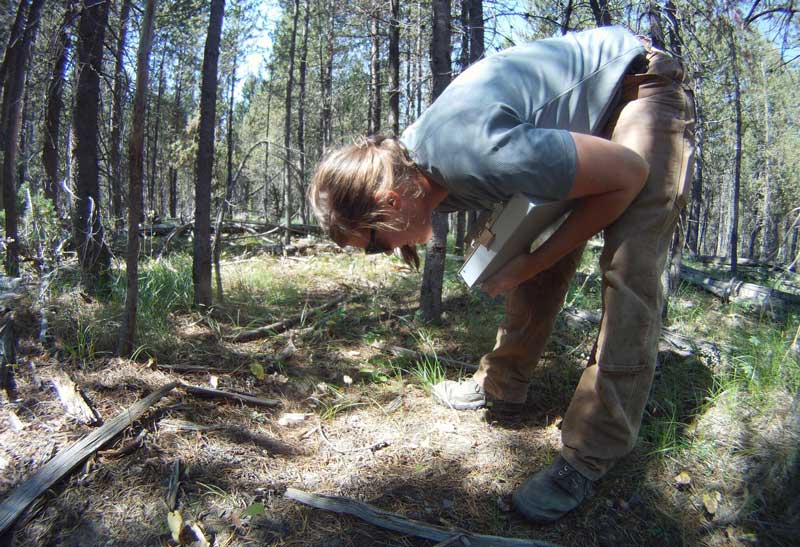The Grizzly Game: Tracking an endangered bear
Published at | Updated atEDITOR’S NOTE: This is the second of a two part series on the capturing, tagging and tracking grizzlies in the wild. The first part of the series is available here.
FREMONT COUNTY — A truck is slowly rolling out of the woods. A rope tied to its hitch is connected to a trap door. As the truck leaves, the door lifts. A grizzly bear runs out wearing a new trackable GPS collar.
This is how biologists keep track of an endangered species in eastern Idaho.
Ten percent of the grizzly bears in the Greater Yellowstone ecosystem are collared. Griz 227, Idaho’s first grizzly collared for research, has worn a collar for two decades sending a signal every 105 minutes. He travels 1,400 miles between June and November — in land and water. Some bear collars send location points from the middle of Island Park Reservoir.
“We have bears that swim across the reservoir at night. That’s a pretty good trick,” says Bryan Aber, retired Idaho Fish and Game wildlife biologist. “ You learn some pretty neat information from that on where they go and what they do.”

Researchers pick points on the GPS grid and follows on foot. They want to know why the bear stopped where it did, but they don’t want the bear to be there when they arrive.
“There’s a high level of anxiety sometimes,” says Nichole Walker, grizzly bear researcher. “ It’s also a big thrill to be out here in bear country and being able to investigate and seeing things a lot of people don’t get to see.”
Outdoor journalist Kris Millgate is based in Idaho Falls, Idaho. See her work at www.tightlinemedia.com.


